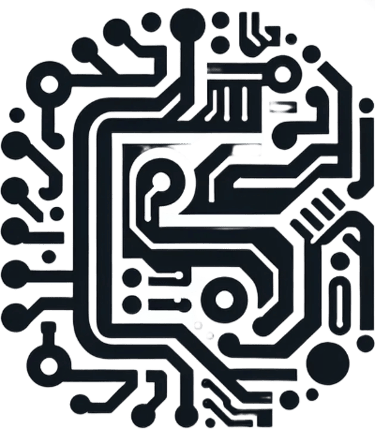Week One
Mon - Fri
Digital Systems:
Calculus III:
Mathematical Applications in Physics:
Computer Programming:
I kicked off the semester with the class I anticipate will be my favorite, Digital Systems. This is my only engineering class and the second I have taken that is specific to electrical engineering
We briefly reviewed the syllabus and then spent the remainder of class on binary and decimal numbers, what they mean, and how to convert one to the other.
Our discussion of binary and decimal numbers took us to the overarching structure that all numbers share, no matter their base. Furthermore, we learned a pattern that makes writing binary numbers quickly and in order easy.
The pattern can be stated as such: Each digit oscillates between groups of ones and zeros, the amount within the group equaling 2^n-1, n being the digit number beginning from least significant. This pattern can be seen in the picture to the right.
Finally, we discussed two methods for converting decimal numbers into binary numbers, as seen in the second image to the right. I will add that I could have articulated the subtraction method better, but I hope this description will suffice.
We began class by discussing the syllabus and our instructor's overall expectations of us throughout the semester. The remainder of the class was about introducing the topic of parametric equations.
The content was prefaced by a review of functions, which have one dependent and one independent variable. The instructor went on to explain how parametric equations are those with one dependent variable and multiple independent variables.
The term parametric curve was described as the curve created by plotting a parametric equation. The term parameterization was described as the interval of the dependent variable (we used t).
Finally, the two were related by a comparison to a car driving on the road; More than one car can travel on a single road at a time. Similarly, within a parametric equation, multiple parameterizations can outline the same parametric curve.
This course is likely to be my most difficult, but likewise, most rewarding class I take this semester. I say this because many concepts in Calculus III and Differential Equations are assumed to be known by the student. To be fair, I believe I am the only student in the class that has not taken these two math classes yet.
The instructor began the class by introducing fields, and explaining that there are scalar and vector fields. He mentioned the temperature at each point in the classroom, and how it can be represented as a scalar field. He then gave the example of each water molecule's speed and direction in a running stream, an example of a vector field.
These examples led the instructor to a question, "How do you take the derivative of a field?" The answer is: You take the partial derivative of the field equation with respect to x, y, and z, and add them together, making them each the respected component in the cartesian coordinate system. This is called taking the gradient of a field.
The instructor then explained the del operator, a symbol that bears many meanings next to a field equation. Furthermore, he explained how to take the directional derivative of a field using the gradient and a unit vector.
I mentioned on day one that I anticipate Digital Systems to be my favorite class, well, I anticipate Computer Programming to be my least favorite. I say this because I don't feel like it is an important skill for me to learn the specific language they teach, Java. I would much prefer learning Python. However, I will say, I do believe that programming sharpens your ability to create detailed processes, because if you do not, any code longer than fifty lines can begin to get confusing.
That being said, don't be surprised if my daily updates for this class are much shorter than for the other three.
We began this class by reviewing 1302 concepts, which I am very thankful for because it has been a year since I took that class. These topics included style & documentation, data storage & representation, and truth tables.
Note: These entries were originally in a daily update format, so any odd wording may be attributed to that.
